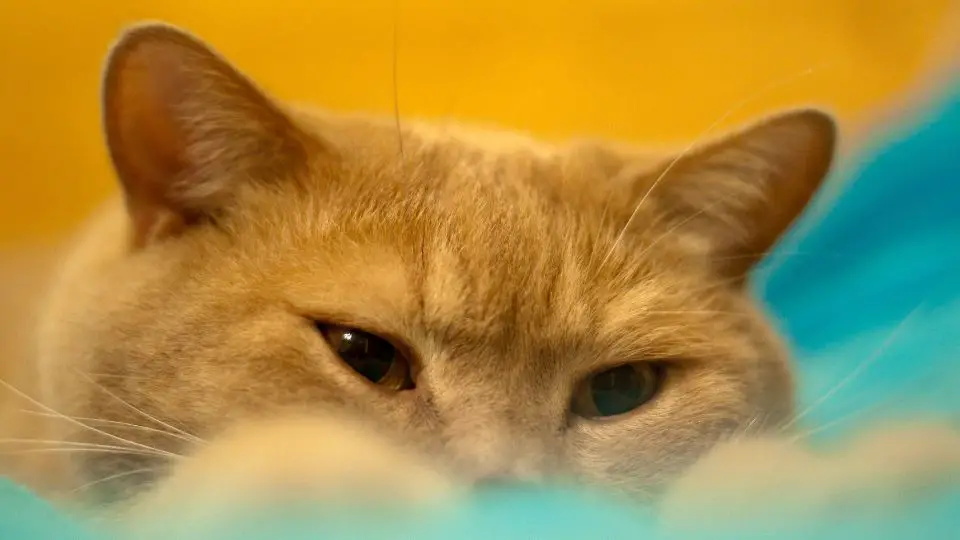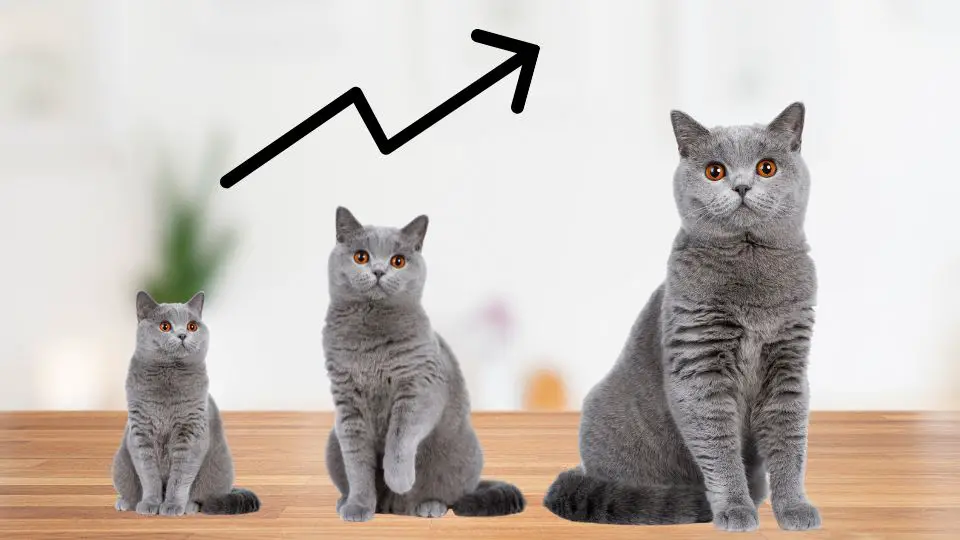If you’ve noticed bald patches on your British Shorthair, it’s natural to be concerned and wonder about the underlying causes.
Bald patches in British Shorthairs can be caused by various factors such as allergies, parasites, ringworm infection, hormonal imbalances, stress, nutritional deficiencies, or underlying medical conditions.
In this article, we will explore common causes of bald patches in British Shorthairs, helping you identify possible reasons and guiding you toward appropriate solutions.
Common Causes of Bald Patches in British Shorthairs
Bald patches in British Shorthairs can be concerning for cat owners. Hair loss can occur due to various reasons, including allergies, parasites, infections, and hormonal imbalances. Understanding these common causes is crucial in identifying the underlying issue and providing appropriate treatment.
Allergies and skin irritations
Allergies and skin irritations are among the leading causes of hair loss in cats. Common allergens such as certain foods, environmental factors like pollen or dust mites, and even grooming products can trigger allergic reactions in British Shorthairs. Symptoms to watch out for include itching, redness, inflamed skin, and bald patches.
If you notice these signs, it’s important to identify the allergen and eliminate it from your cat’s environment. A veterinarian can provide guidance on conducting an elimination diet or allergy testing to determine the specific allergens causing the reaction.
Parasites and infestations
Fleas, mites, and ticks are common external parasites that can cause hair loss in British Shorthairs. These tiny creatures irritate the skin and can lead to excessive scratching, biting, and hair pulling, resulting in bald patches. Preventive measures such as regular flea and tick treatments, maintaining a clean living environment, and grooming practices can help reduce the risk of infestations.
If your cat already has an infestation, your veterinarian will recommend appropriate treatments to eliminate the parasites and promote hair regrowth.
Ringworm infection
Ringworm is a fungal infection that can affect a cat’s coat, causing circular patches of hair loss. It is highly contagious and can spread to other pets and humans. If you notice round, scaly, and bald patches on your British Shorthair’s skin, it’s essential to consult a veterinarian for diagnosis and treatment.
Treatment typically involves antifungal medication, topical creams, and environmental decontamination to prevent the spread of infection.
Hormonal imbalances
Hormonal imbalances can disrupt the normal growth cycle of a cat’s fur, leading to hair loss. Conditions such as hyperthyroidism or adrenal gland disorders can affect hormone levels and contribute to bald patches. If you observe hair loss along with other symptoms like weight changes, increased thirst, or excessive grooming, consult a veterinarian for a thorough examination.
Treatment options may include medication, dietary management, or surgical intervention, depending on the specific hormonal condition.
Other Possible Causes
Stress, nutritional deficiencies, and certain medical conditions can also contribute to hair loss in cats.
Stress and anxiety
Stress and anxiety can have a significant impact on a cat’s overall health, including the condition of their coat. Cats, including British Shorthairs, can experience stress due to changes in their environment, social interactions, or underlying medical conditions.
Excessive grooming or pulling out hair can be a manifestation of stress. Creating a calm and stress-free environment, providing hiding spots or safe areas, and engaging in interactive play sessions can help alleviate stress and promote relaxation in your British Shorthair.
Nutritional deficiencies
A poor diet lacking essential nutrients can affect the health of a cat’s coat. British Shorthairs require a balanced and nutritious diet to support their overall well-being, including the condition of their fur. Nutritional deficiencies, particularly those related to essential fatty acids, vitamins, and minerals, can lead to hair loss or a dull and unhealthy coat.
Ensure that your British Shorthair is receiving a high-quality, well-balanced cat food that meets their specific nutritional needs. Consult with a veterinarian for dietary recommendations tailored to your cat’s requirements.
Medical conditions
Certain medical conditions can contribute to hair loss in British Shorthairs. Conditions such as hormonal imbalances, autoimmune disorders, fungal or bacterial infections, and underlying skin conditions may affect the health of their coat.
If you notice bald patches along with other concerning symptoms like itching, redness, or skin lesions, it is crucial to seek veterinary attention. A thorough examination by a veterinarian will help identify any underlying medical conditions and determine the appropriate treatment plan.
Prevention and Treatment
Preventing hair loss in British Shorthairs involves implementing a few general guidelines:
- Regular grooming: Brushing your British Shorthair’s coat regularly helps remove loose hair and promotes blood circulation to the skin, supporting a healthy coat.
- Balanced diet: Ensure your cat is receiving a nutritionally balanced diet that meets their specific needs. Consult with a veterinarian to determine the appropriate diet for your British Shorthair.
- Stress management: Minimize stressors in your cat’s environment and provide opportunities for relaxation and play. Engage in interactive play sessions and create a calm and safe space for your British Shorthair.
The treatment for hair loss in British Shorthairs depends on the underlying cause. Here are some specific treatment options based on common causes of hair loss:
- Allergies and skin irritations: Identifying and eliminating potential allergens or irritants from your cat’s environment is crucial. Consult with a veterinarian for appropriate allergy testing and treatment options, which may include antihistamines, topical treatments, or hypoallergenic diets.
- Parasites and infestations: Treating your British Shorthair for fleas, mites, or ticks is essential to eliminate the underlying cause of hair loss. Consult with a veterinarian to determine the most suitable treatment, which may include topical or oral medications.
- Ringworm infection: Ringworm is a fungal infection that can cause hair loss. Treatment typically involves antifungal medications prescribed by a veterinarian, along with thorough cleaning and disinfection of the environment to prevent its spread.
- Hormonal imbalances: Hormonal issues may require specific medical interventions, such as hormone replacement therapy or medications to regulate hormone levels. A veterinarian can diagnose and recommend appropriate treatment options based on the specific hormonal imbalance identified.
Conclusion
In conclusion, bald patches in British Shorthairs can be caused by a variety of factors, including allergies, parasites, ringworm, hormonal imbalances, stress, nutritional deficiencies, and underlying medical conditions. Identifying the specific cause is crucial for effective treatment and prevention of further hair loss.
If you notice bald patches on your British Shorthair, it is recommended to consult with a veterinarian who can examine your cat, perform necessary tests, and provide a proper diagnosis. Based on the underlying cause, appropriate treatment options can be implemented, which may include dietary changes, medication, topical treatments, or environmental modifications.
Remember, early intervention and regular veterinary care are key to ensuring the health and well-being of your British Shorthair.







